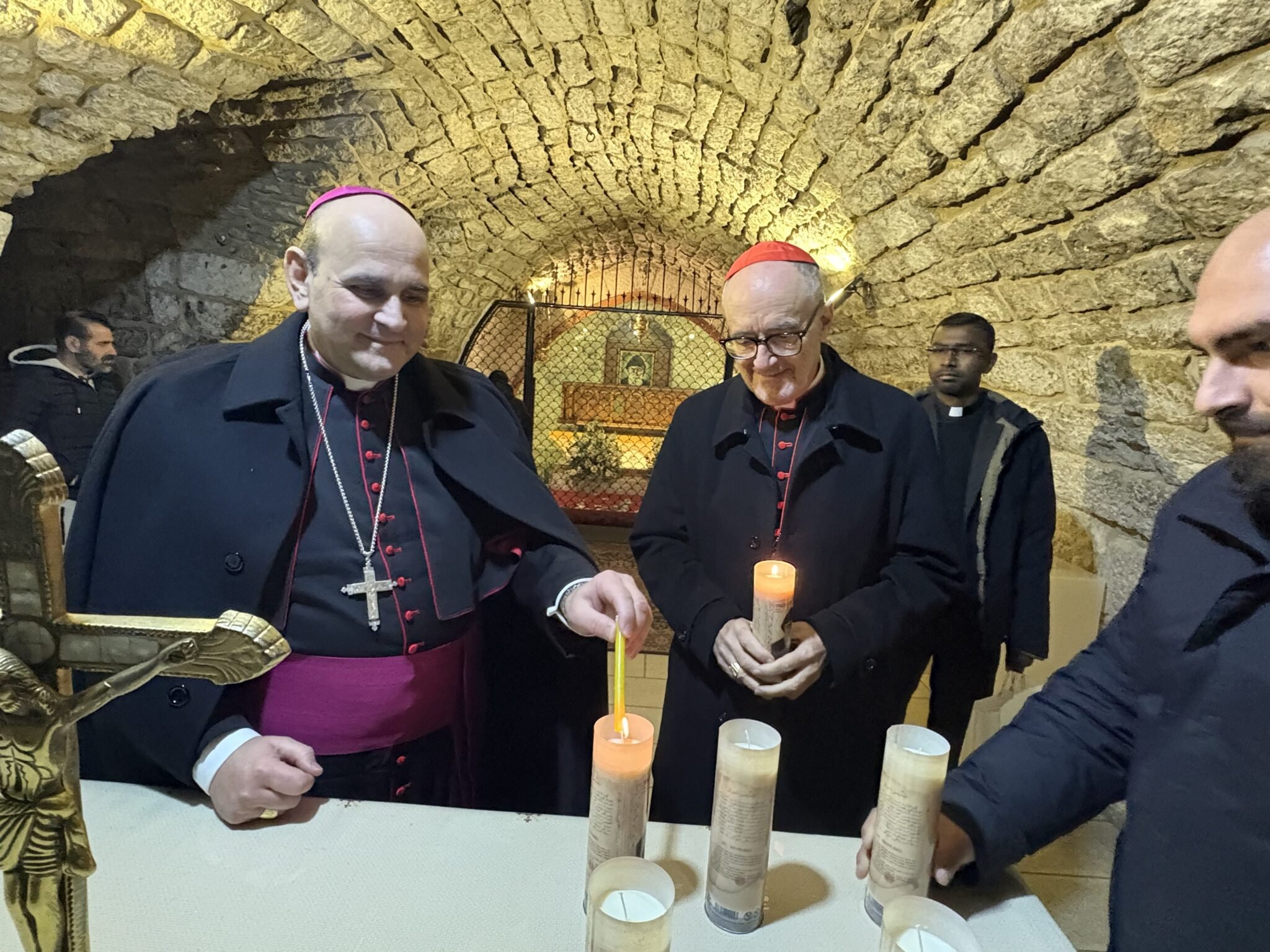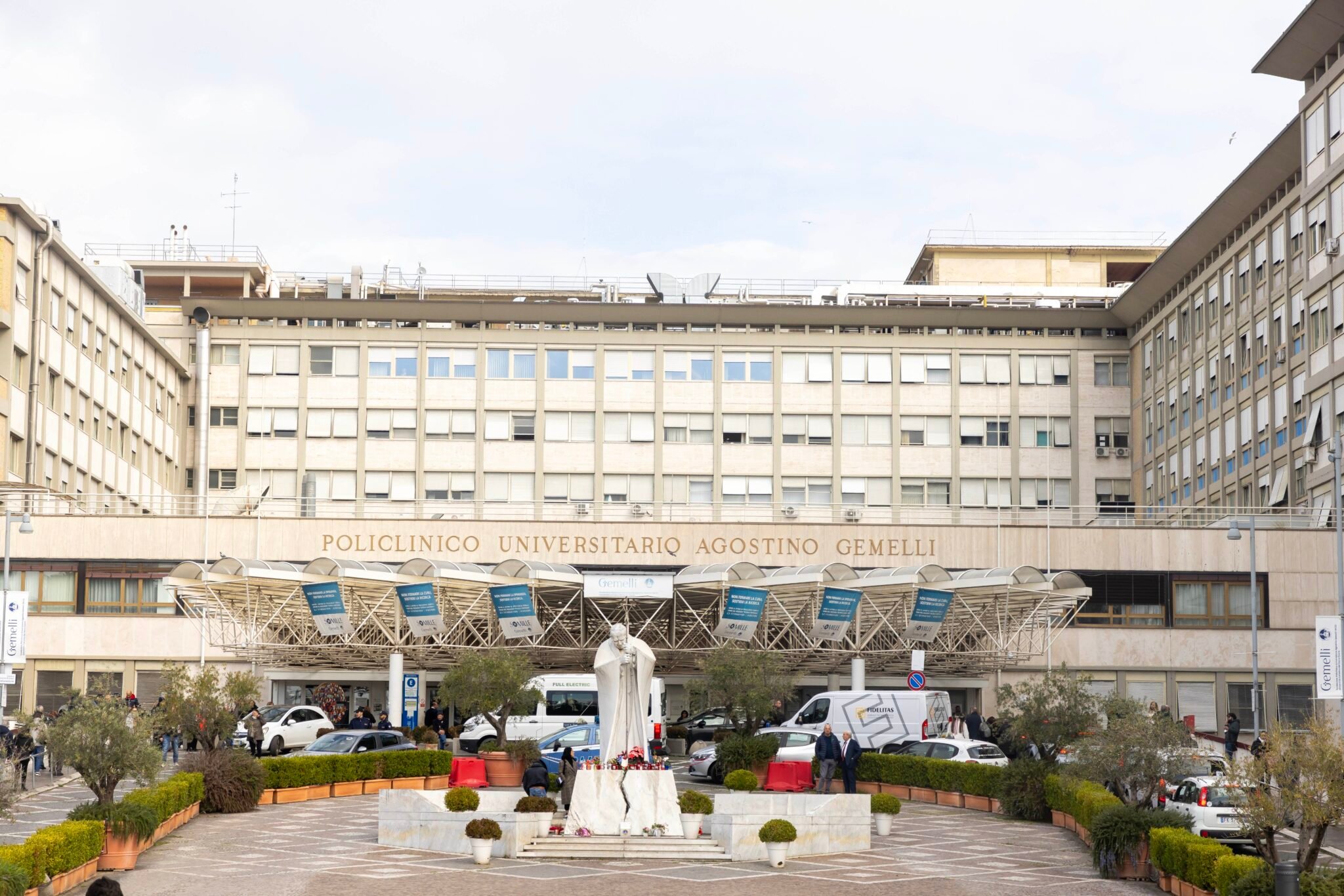Pope Francis experienced “an asthmatic respiratory crisis of prolonged magnitude, which also required the use of oxygen at high flows” 22 February, said the daily medical bulletin released by the Vatican.
In addition to needing more oxygen, which was administered through a nasal cannula, the bulletin said that the 88-year-old pope required a blood transfusion after tests “showed plateletopenia, associated with anemia.” Plateletopenia is a low platelet count; in English it is more commonly called thrombocytopenia.
“The Holy Father’s condition continues to be critical; therefore, as explained yesterday, the pope is not out of danger,” said the bulletin released late 22 February.
“The Holy Father continues to be alert and spent the day in an armchair although in more pain than yesterday,” the bulletin said. “At the moment the prognosis is reserved.”
The pope’s doctors at Rome’s Gemelli hospital had told reporters 21 February that they write the bulletins with the team of doctors treating the pope and release it through the Vatican press office with the pope’s approval.
Pope Francis was admitted to the hospital 14 February with bronchitis and trouble breathing.

Meeting reporters after the pope had been hospitalised for a week, his doctors said the pope had shown signs of improvement but is not completely out of danger as he fights double pneumonia and a respiratory tract infection.
The Vatican press office had already said early 22 February that Pope Francis would not lead the recitation of the Angelus prayer in any form from the hospital. Some people had hoped he would go to the window of his room or at least send an audio greeting.
Cardinal Pietro Parolin, Vatican secretary of state, in an interview published 22 February in the Italian newspaper Corriere della Sera, was asked about media speculation on whether the pope would or should resign.
“I think it is all useless speculation,” he said. “Right now, we are focused on the health of the Holy Father, his recovery and his return to the Vatican; these are the only things that count.”
The cardinal, who was traveling to Burkina Faso when the pope was hospitalized, returned to Rome 19 February. Many reporters expected him to go to the hospital to see the pope that day.
But he has not gone yet.

“I let him know that I am available if he believes it is necessary, but up to now there has been no need. And, in that regard, it is better that he is protected and has as few visitors as possible so that he can rest,” Cardinal Parolin said. The pope’s physicians also had said 21 February they were trying to limit even the number of medical staff going in and out of the pope’s room because of the danger of infection.
The cardinal also was asked if he was worried about rumour’s of people jockeying for power at the Vatican and about false information being published about the pope’s health.
“Honestly, I have to say that I don’t know if there is any such manoeuvring, and in any case, I try to stay out of it,” Cardinal Parolin said. “On the other hand, I think it is quite normal that in these situations uncontrolled rumours can spread or some offhand comment is uttered; it is certainly not the first time it has happened. However, I don’t think there is any particular movement, and so far, I haven’t heard anything like that.”
The post Pope has respiratory “crisis,” doctors say “prognosis reserved” appeared first on The Catholic Weekly.
Credit: Source link




